
256 Million Colours of Violence
- 256 Million Colours of Violence
- Data Vitality: Soft Infrastructures and Economies of Knowledge
- Reboot Me Softly ↻
- Is there a room with just a colour?
- Is there a room with just a colour? In conversation with Camelo Ramiro
- Digital Creativity and Entanglement: In conversation with Timo Tuhkanen
- Violence in Finnish Society: In conversation with Arvind Ramachandran
- Towards a New Internet: In conversation with Palash Mukhopadhyay
- Cyborg Archives: 256 Million Colours of Violence, TIFA Working Studios, Pune
- Colours of Violence, AROOP III - Totems and Taboos
- Limitations of Liability
- Limitations of Liability, Mumbai Assembly
- Urgency of Asking Questions
- Limitations of Liability, Harkat Studios
- 256 Million Colours of Violence, Exhibition
- Not your Regular Archive
- Does violence have a colour?
- Shades of Violence
- What is the colour of violence?
- In Conversation with Ali Akbar Mehta
- About 256 Million Colours of Violence
- Grant Report
256 Million Colours of Violence, a survey-based interactive archival research project, invites online and onsite audiences participation to actively co-create an archive of colours that represent ‘violence’. Know more about the project and participate online at www.256milioncoloursofviolence.com
Where do you fit in the larger scheme of things? Is your citizenship made doubtful? Is your right to live questioned? Does the question, ‘Where are you from?’, seem like a violent intrusion normalized through repetition?
By transforming the commonplace survey questionnaire into a diverse communication interface, the project subverts the problematic usage of questionnaires as bureaucratic tools for data collection. With particular emphasis on questions of gender, sexuality, class, and citizenship, it reveals the presence of violence – in routine everyday questions, and in everyday life. Through 50 questions gathered from various bureaucratic forms, the project facilitates an ‘encounter of equals’ and serves as a witness, a therapist, and a mirror, creating a new vocabulary of colour in the context of violence.
This project provides an unparalleled glimpse into the complex cosmological relationship of ourselves as both victim and perpetrator of the violence and trauma surrounding us. Based on four years of research, it focuses on the culmination of a hyper-researched archive of notes embedded within the questionnaire. This archive delves into ‘the normalised, normative, the disproved-yet-in-practice, the banal, obscure, unheard of, and the unthinkable’ to reveal ‘direct, structural, and cultural’ [1] violence present in everyday life and elicit ‘knowledge systems’ that reproduce and sustain the ecology of violence. The glossary styled archive compiles the variegated aspects of our identities that are daily scrutinized, questioned and thrown back to us as everyday confrontations. Asking online audiences to participate is to ask them to confront these tangible and abstract concepts and emerge undefeated.
Although 256 Million Colours of Violence began as a response to the specific events unfolding after the historic Malegaon Blasts (2008, India), this response has grown to encompass several other events in a world that is radically changing. As a Conceptual Art project, the website becomes the primary site of negotiation between the participant and the questions that characterise everyday violence. As a site of negotiation inviting active participation, it reshapes the individual online experience into an emotionally charged private performance of confrontation and healing. Bound to the aesthetics of technical and legal information infrastructures, to neural networks, mindmaps, and internet protocols, the project invites a critique of these architectures of control by creating an open-source and free platform for the simple sharing of colour.
The project as an ongoing archive will also commission and produce essays and texts that orbit themes and subjects regarding the ways in which we conceive of violence and counter it.
____
[1] Galtung J., Fischer D. (2013) Violence: Direct, Structural and Cultural. In: Johan Galtung. SpringerBriefs on Pioneers in Science and Practice, vol 5. Springer, Berlin, Heidelberg
Data Vitality: Soft Infrastructures and Economies of Knowledge
Dipoli Gallery, Aalto University, Helsinki, FI


Exhibition Curatorial Note:
The exhibition explores the changing role of data in society by combining interdisciplinary perspectives on how data policies are shaping education and research across art, science, business and technology.
As we live in an increasingly data-driven world, how does this impact our practices and attitudes to data at an individual and societal level? Data can be seen as a tool, a utility, a language, a risk and a resource. Questions arise from the real and speculative potential of rendering our bodies, movements, labour, research and environments in data, as machine-readable and reusable. In what ways are we reliant on the capture of data and analytics for solving issues like sustainability in climate change, healthcare, cybersecurity and novel materials? What role does data literacy play in understanding data rights and intellectual property? These questions are addressed through a combination of multidisciplinary interviews and artistic research within the framework of data vitality. It showcases the relationship between human-centric data and the soft infrastructures which connect, intersect and render new dynamics between education, research and society.
The exhibition at Dipoli Gallery creates a visual and material experience of our relationship with data in the context of research, education and society including new artworks informed by research infrastructures such as OtaNano, developments in quantum technology, arts and media practices, operational impacts of master data and digitalisation, data literacy, digital archiving, open data and intellectual property.
The exhibition website, is a pilot of Aalto University’s new virtual exhibition platform that includes further texts, interviews and media.
Reboot Me Softly ↻
19th edition of Piksel Festival, Bergen, NO
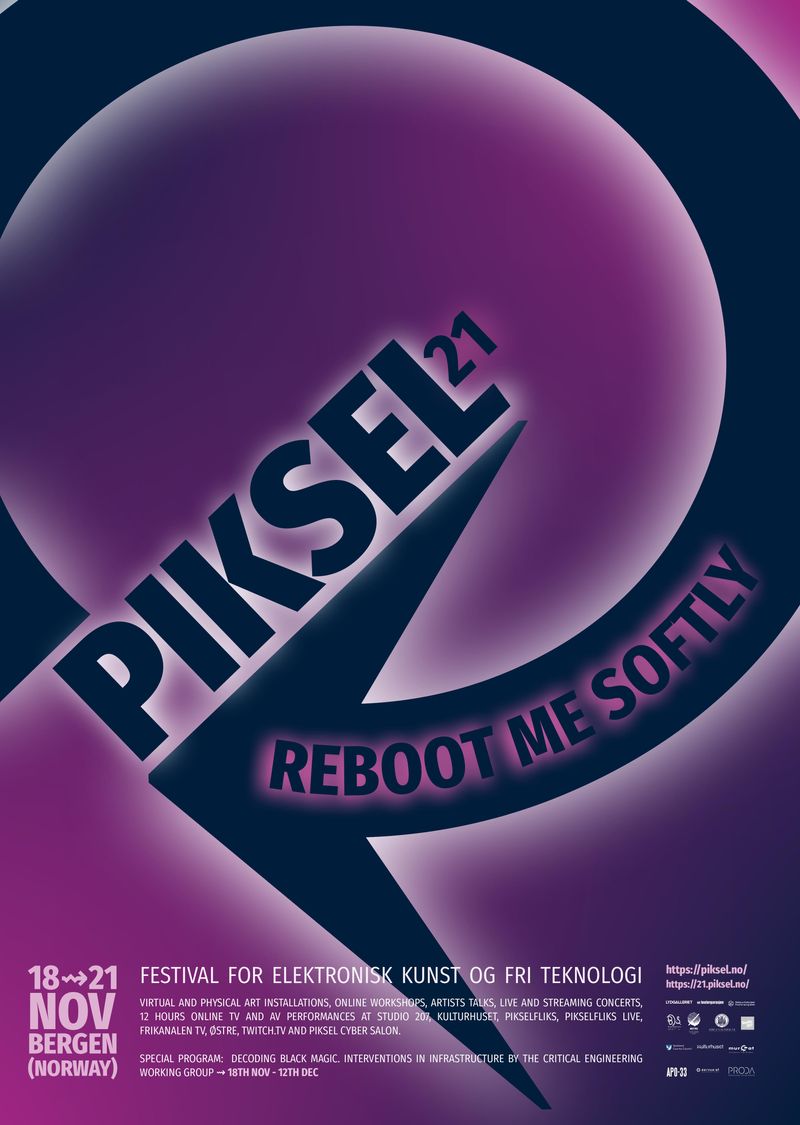
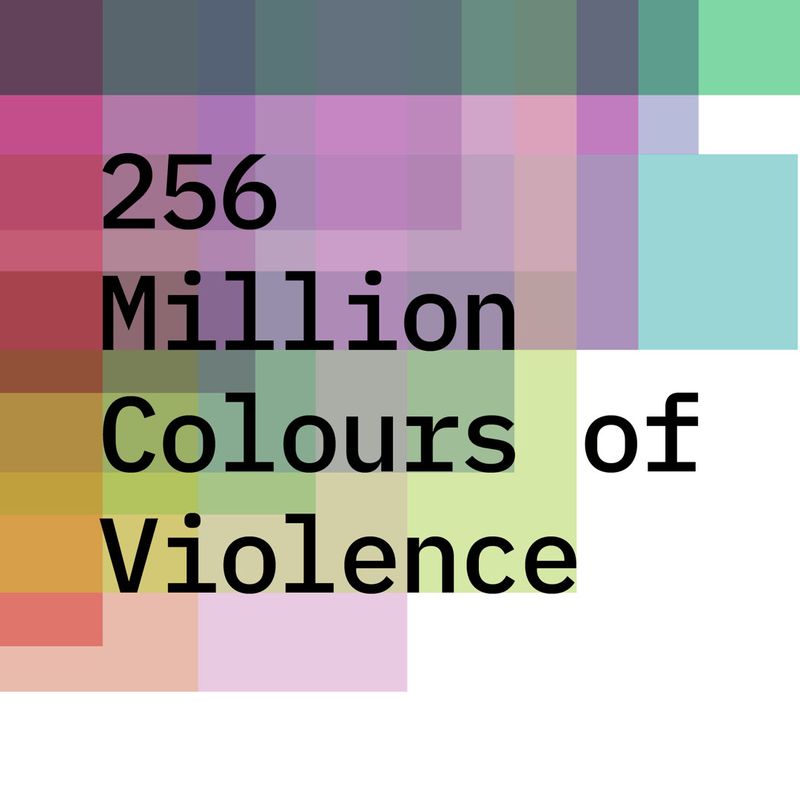
256 Million Colours of Violence was invited to be showcased online as part of Reboot Me Softly ↻, the 19th edition of the Piksel Festival for electronic Art and Free Technology.
Piksel is an international network and annual event for electronic art and technological freedom. Part workshop, part festival, it is organised in Bergen, Norway, and involves participants from more than a dozen countries exchanging ideas, coding, presenting art and software projects, doing workshops, performances and discussions on the aesthetics and politics of free technologies.
The development, and therefore use, of digital technology today is mainly controlled by multinational corporations. Despite the prospects of technology expanding the means of artistic expression, the commercial demands of the software industries severely limit them instead. Piksel is focusing on the Free/Libre and Open Source movement as a strategy for regaining artistic control of the technology, but also a means to bring attention to the close connections between art, politics, technology and economy.
Visit the online festival here.
Is there a room with just a colour?
Myymälä2, Helsinki
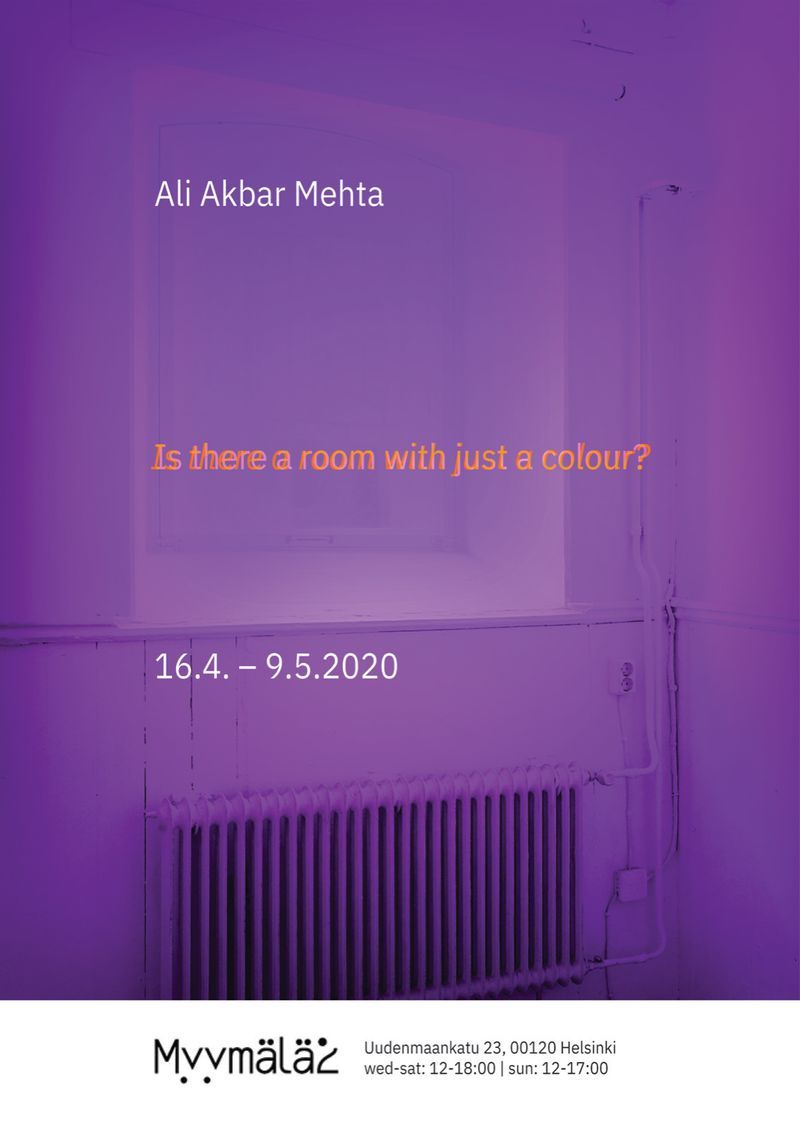

Is there a room with just a colour? at Myymälä2, Helsinki is an exhibition by artist Ali Akbar Mehta inviting online and on-site audiences to participate and become co-creators of a living archive that represents colours of violence.
Where do you fit in the larger scheme of things? Is your citizenship made doubtful? Is your right to live questioned? Does the question, ‘Where are you from?’, seem like a violent intrusion normalized through repetition?
By transforming the commonplace ‘survey questionnaire’ into a diverse communication interface, the project subverts the problematic usage of questionnaires as bureaucratic tools for data collection. With particular emphasis on questions of gender, sexuality, class, and citizenship, it reveals the presence of violence – in routine everyday questions, and in everyday life. Through 50 questions gathered from various bureaucratic forms, the project facilitates an ‘encounter of equals’ and serves as a witness, a therapist, and a mirror, creating a new vocabulary of colour in the context of violence.
…
The work of Ali Akbar Mehta provides an unparalleled glimpse into the complex cosmological relationship of ourselves as both victim and perpetrator of the violence and trauma surrounding us. Based on four years of research, this new exhibition will focus on the culmination of a new archive, compiling the variegated aspects of our identities that are daily scrutinized, questioned and thrown back to us as everyday confrontations. In a world mediated by technology, identities may be re-forged only by challenging this mediation through both online and offline tools. Is there a room with just a colour? unfolds a poetic experience of violence and colour through a multimedia installation and a reading room.
The exhibition opens with a public launch of the website, www(dot)256millioncoloursofviolence(dot)com. Online participation through the website will be open 24X7 after the website launch on Thursday, April 16, 2020, at 18:00 UTC+2.
…
Is there a room with just a colour?
16.4–9.5, 2020
Myymälä2
Uudenmaankatu 23, 00120 Helsinki
Hours: Wednesday–Saturday 12–6 pm
Sunday 12–5 pm
The exhibition will continue till Saturday, May 09, 2020.
Is there a room with just a colour? In conversation with Camelo Ramiro
Myymälä2, Helsinki
Digital Creativity and Entanglement: In conversation with Timo Tuhkanen
Myymälä2, Helsinki
Ali Akbar Mehta and Timo Tuhkanen discuss 256 Million Colours of Violenceas an online participatory work and explore the affordances of participation as an interplay ‘in flux’ between art and society.
The discussion unpacks the political promises offered in the first generation of the Internet, where ‘Cyberspace’ was a term of endearment for those familiar with its alien potential and unknownability, where cyberspace seemed to promise a kind of society that real space would never allow – freedom without anarchy, control without government, consensus without power. In the words of #Dave_Clark’s manifesto that defined this idea: “We reject: kings, presidents and voting. We believe in: rough consensus and running code.” The information age was to replace tired ideas like voting, legislation, and territorial representation with flexible, consensus-driven rules, created by informal communities organized by interest and expertise rather than the arbitrary condition of location.
This is the third conversation live streamed as part of the exhibition ‘Is there a room with just a colour?’, at Myymaälaä2, Helsinki.
"…all the talks we had during this exhibition made me think about violence in my own environment, my own rooms. What I realised in a more conceptual way is that for me violence is always related to faces, especially the faces I’ve seen doing violence within my normal everyday life. One such face which has following me around is from anime and I’ve drawn it here to be seen. The frame is an extreme zoom of just a grin, it appears in more than one series and is used to depict psychopaths. The grin appears when the person has committed violence and they know they were not seen doing it. I find the way the nose is represented to be the most interesting thing, but I think it also speaks about the headlessness and faceslessness of violence even when its obviously there; the representation of just the colours resonates easier in the viewer than the full material person…"
– Timo Tuhkanen
Language: English
Violence in Finnish Society: In conversation with Arvind Ramachandran
Myymälä2, Helsinki
How can an artistic practice present itself as a toolkit to articulate experiences of violence and trauma? Ali Akbar Mehta and Arvind Ramachandran speak about Violence in Finnish Society and shared experiences as outsiders.
This is the fourth conversation live streamed as part of the exhibition ‘Is there a room with just a colour?’, at Myymaälaä2, Helsinki.
Arvind Ramachandran is a standup comic, organiser and artist. His work focuses on confronting visile and invisible oppressive structures operating in contemporary society, especially as they affect thoses without class, caste, geder, and race priveliges.
He currently co-organises FAR Night School and co-hosts POC Open Mic Helsinki.
Towards a New Internet: In conversation with Palash Mukhopadhyay
Myymälä2, Helsinki
The current iteration of the Internet is a dystopian and hegemonic space – a tool deployed to facilitate marketability– with the knowledge that the internet is the best (economic) ‘value production’ space.
Ali Akbar Mehta and Palash Mukhopadhyay discuss the need for 256 Million Colours of Violence as an ongoing inquiry embedded in digital media and contemporary social culture – one that focuses on the political instrumentalization of the tools, techniques, and infrastructures of the web, with particular attention to the manipulation of information to shape opinion, and the importance of nurturing new communities that by recognising the everyday presence of violence are able to further the necessary discourses that counter violence and challenge the precarity of their own social and political positions.
This is the fourth conversation live streamed as part of the exhibition ‘Is there a room with just a colour?’, at Myymaälaä2, Helsinki.
Palash Mukhopadyay (b.1981) is a UX Designer & Developer, self professed tinkerer and part-time wordist. He focuses on simplicity and specialises in rapid prototyping and digital toolsets, with over 15 years of experience in designing and developing for the web.
Language: English
Cyborg Archives: 256 Million Colours of Violence, TIFA Working Studios, Pune
Cyborg Archives: 256 Million Colours of Violence is the second in a series of five performance and participatory installations, exhibited as part of the culmination of my residency at TIFA Working Studios
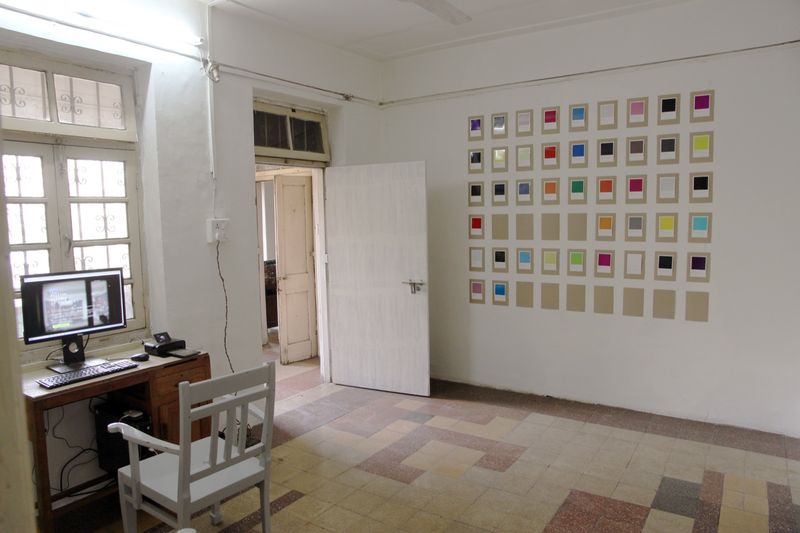
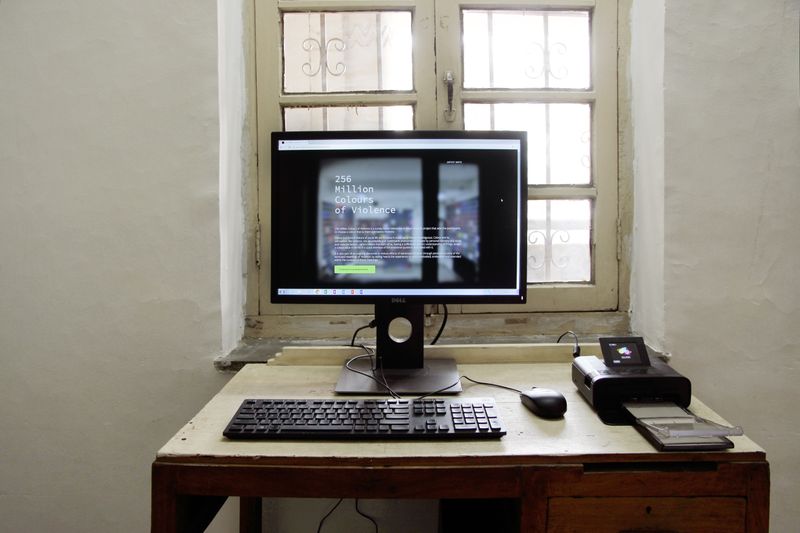
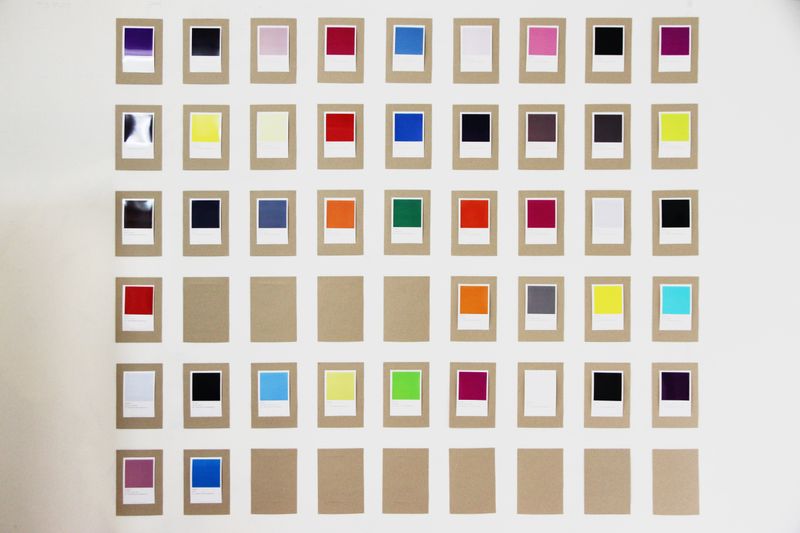
256 Million Colours of Violence is an ongoing project. To know more about this project, click here
Colours of Violence, AROOP III - Totems and Taboos
(ed.) Nancy Adajania, published by Raza Foundation, New Delhi, 2018

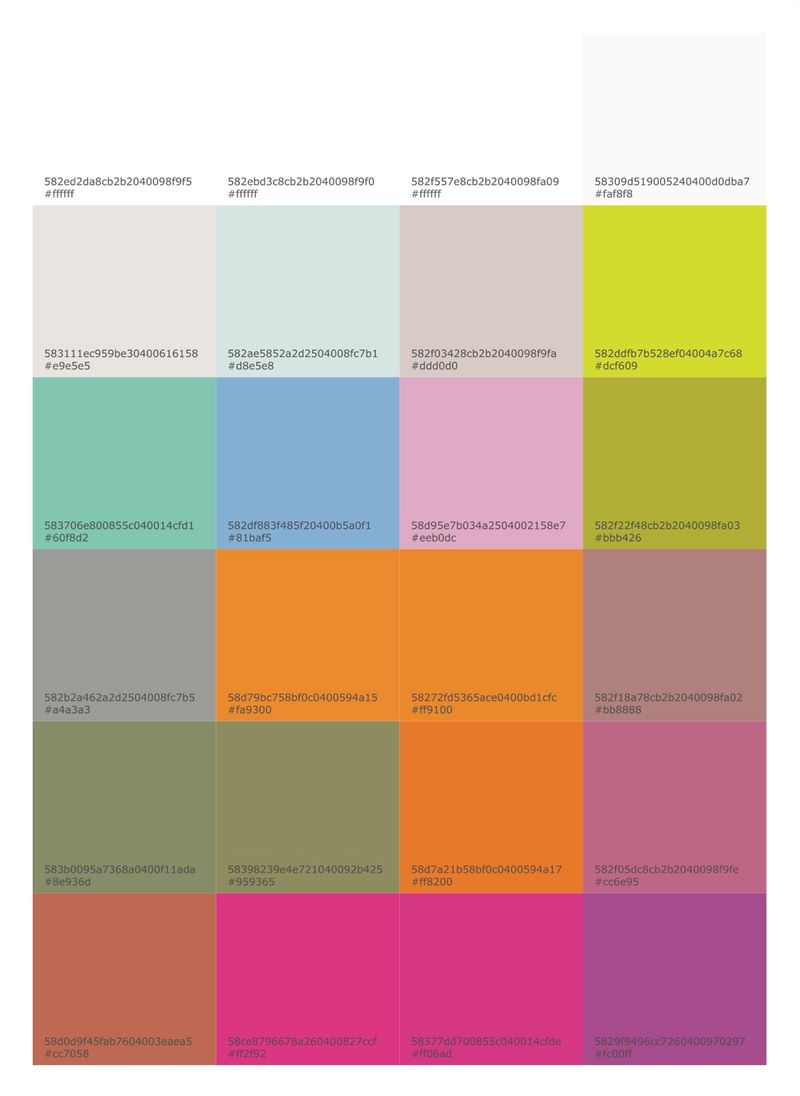
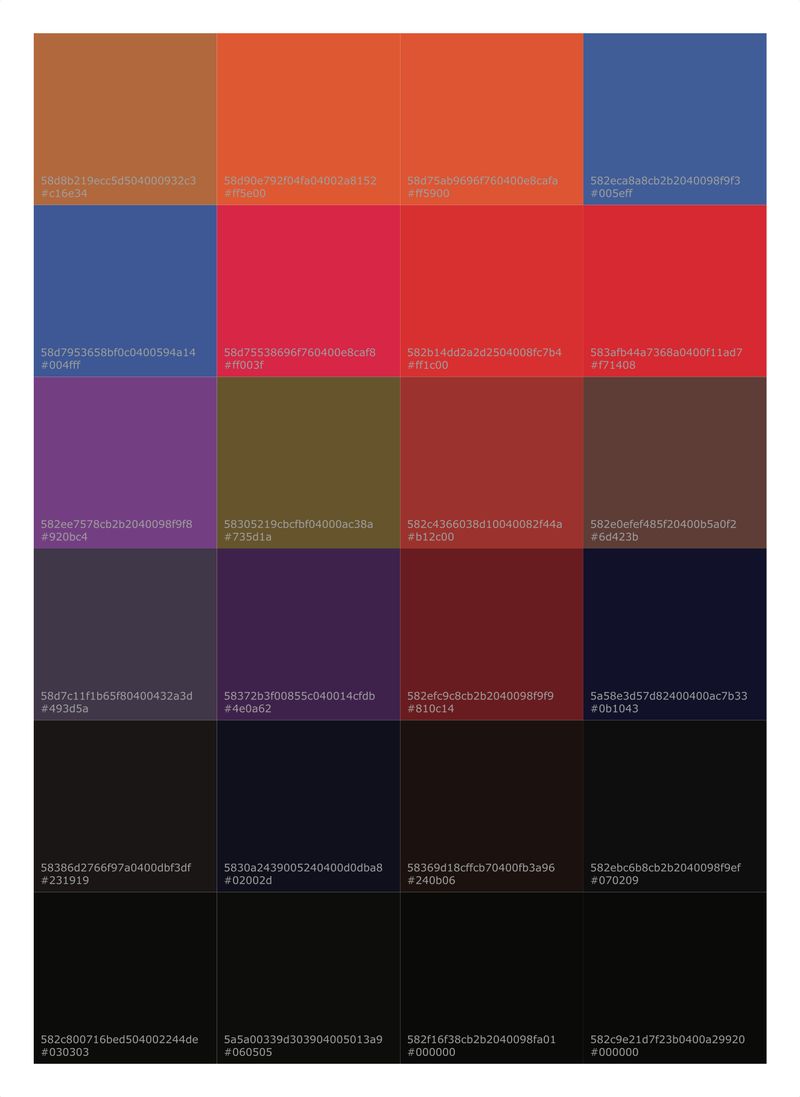

Limitations of Liability
Limitations of Liability was an eight day program between March 17 to 28, 2017, structured around ‘256 Million Colours of Violence’ – an interactive survey-based-research project by contemporary transmedia artist, Ali Akbar Mehta. This interactive survey-based-research project started in 2016, now includes more than 200 entries of people from all walks of life. 256 Million Colours of Violence is available to the public for free. The exposition of the past survey results will be installed along with a participation booth at The Mumbai Assembly and Harkat studios inviting everyone to participate in the ongoing survey.

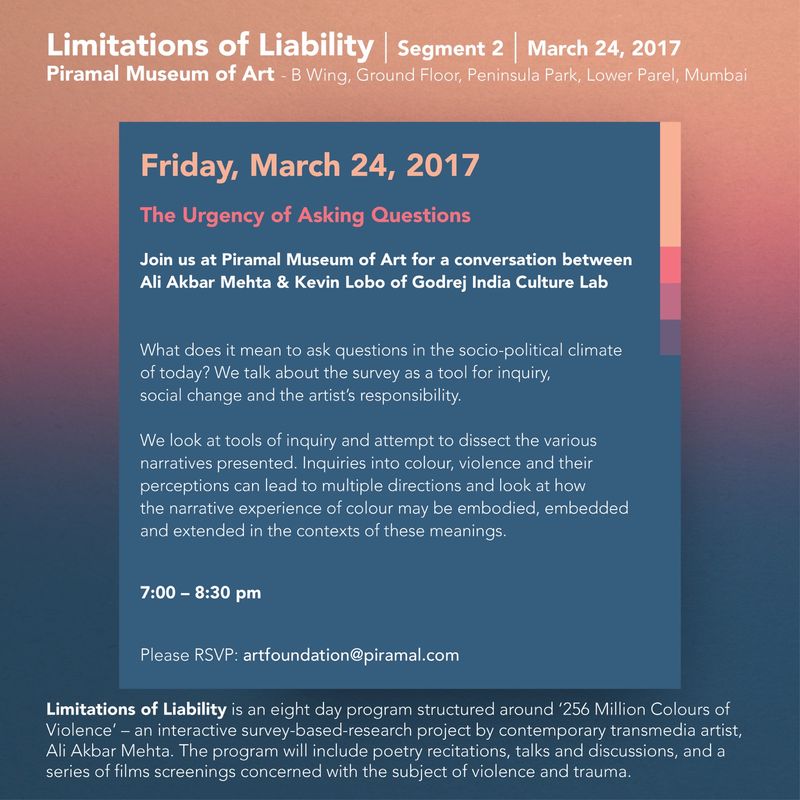
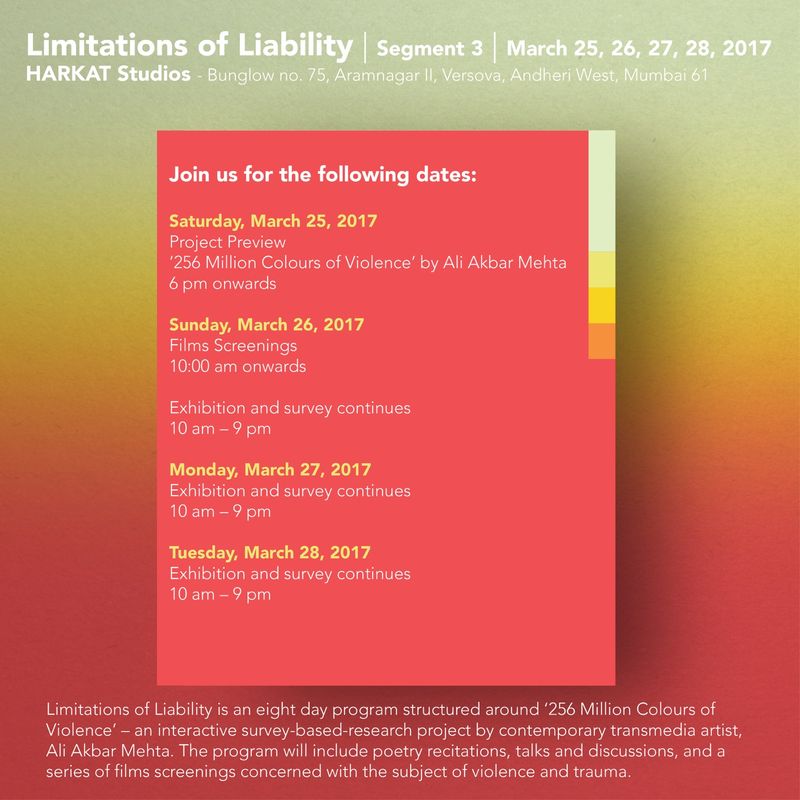
Held across three venues – The Mumbai Assembly (Bandra), The Piramal Art Foundation (Lower Parel) and Harkat Studios (Versova) – the program also included poetry recitations, talks and discussions, and a series of films screenings concerned with the subject of violence and trauma.
Details below:
THE MUMBAI ASSEMBLY
March 17 – 19, 2017
March 17, 2017
6:00 – 9:00 pm: 256 Million Colours of Violence: Project Preview
6:30 – 7:30 pm: Performance by Ramneek Singh
Following a spoken word performance by Ramneek Singh, a conversation between Artist Ali Akbar Mehta and Ramneek Singh looks at ‘Colour and Violence’ through the lens of poetry and the spoken word, attempting to bridge the often unverbalised but deeply personal and unique emotional responses.
March 18, 2017
6:30 to 8:00 pm: Manifestation of Violence
Ali Akbar Mehta and Simpreet Singh discuss how the project is addressing the notion of freely given information, conditional agreements and consent – to corporations and governments, as opposed to an artist project. Simpreet Singh brings his knowledge and experience of having worked with the 'Right to Information Act; (RTI) to similarly pursue and make visible those truths that are important to us.
March 19, 2017
- 6:30 to 8:00 pm
- Big Data Ethics
Ali Akbar Mehta in conversation with Sameer Pitalwala discuss how most data-mining exercises and empirical scientific surveys require a culled group in order to eradicate diversity, a standardisation of the test group to remove ‘noise’. Instead, a project such as ‘256 Million Colours of Violence’ is a celebration of that noise which represents the diversity of Human experience and collective memetic history. It is also part of an ongoing discourse to reduce effects of stereo-typification through personal scrutiny of the word and meanings of ‘Violence’ by asking how is the narrative experience of colour embodied, embedded and extended in the contexts of these meanings.
PIRAMAL ART FOUNDATION
March 24, 2017
- 7:00 – 8:30pm
- The Urgency of Asking Questions: Ali Akbar Mehta in conversation with Kevin Lobo
HARKAT STUDIO
March 25 – 28, 2017
March 25, 2017
6:00 – 9:00 pm: 256 Million Colours of Violence, project preview and vernissage
March 26, 2017
10:00 am onwards: Films Screenings*****
10 am – 9 pm: Exhibition and survey continues
March 27-28, 2017
10 am – 9 pm: Exhibition and survey continues
* Screening Schedule:
4.1 Miles
Directed by Daphne Matziaraki (2016), 22min
10:00
Nowhere Line: Voices from Manus Island
Directed by Lukas Schrank (2015), 16min
11:00
Al midan [The Square]
Directed by Mostafa Sharaf (2014), 1h 35min
11:30 am
The Pride of Strathmoor
Directed by Einar Baldvin (2014), 9 mins
13:30
Devil
Directed by Jean-Gabriel Périot (2012), 8 min
13:45
How to start a revolution
Directed by Ruaridh Arrow (2011), 1h 25min
14:15
Waltz with Bashir
Directed by Ari Folman (2008), 1h 30min
16:45
Akrosh
Directed by Yusuf Mehta (2003), 20 min
18:30
Ram Ke Naam [In the Name of God]
Directed by Anand Patwardhan (1992), 1h 31min
19:45
Limitations of Liability, Mumbai Assembly
Exhibition and Artist Talks
The project is displayed in Mumbai for the first time, in 2017.
As a traveling project across venues, the project in its iteration at Mumbai Assembly is conceptualised to be a space for discourse and conversation. This translated as three events, each a dialogue with an invited speaker to collectively reflect on violence in its various forms by forming symbiotic relationships with each other’s praxes.
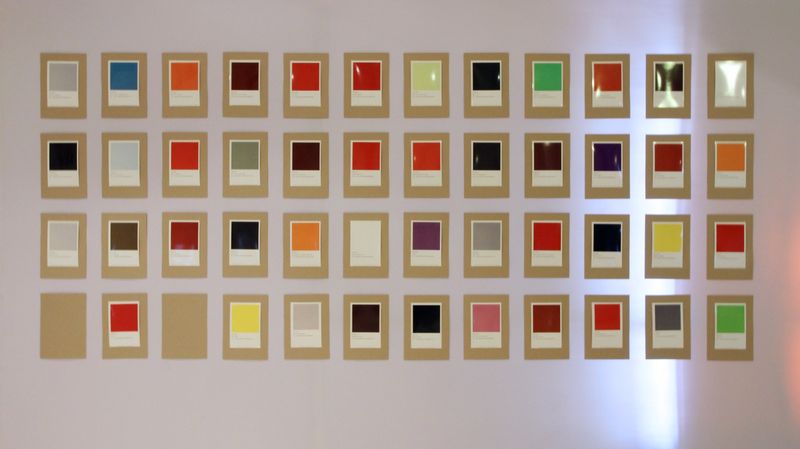
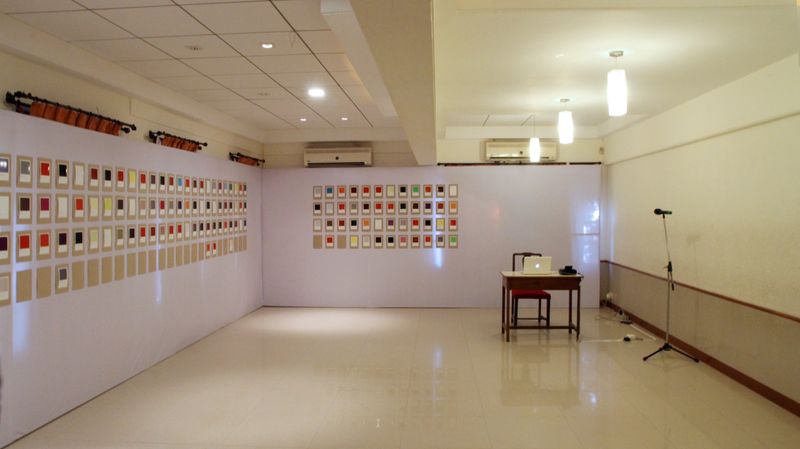




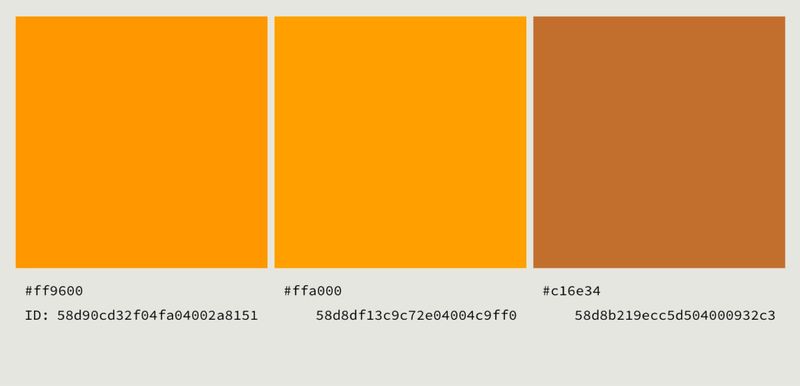
Performance by Ramneek Singh
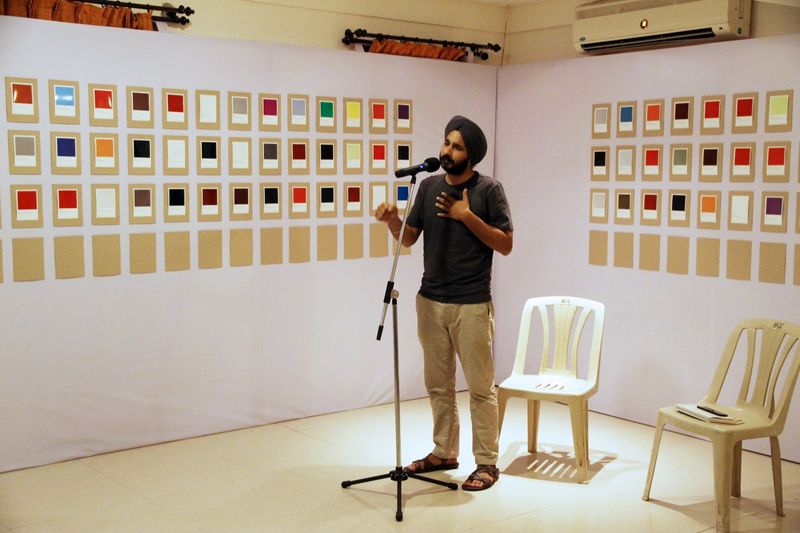
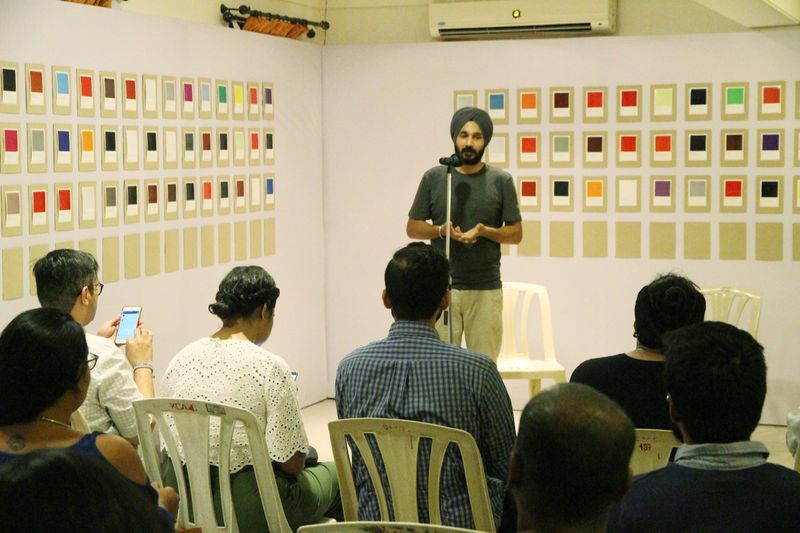
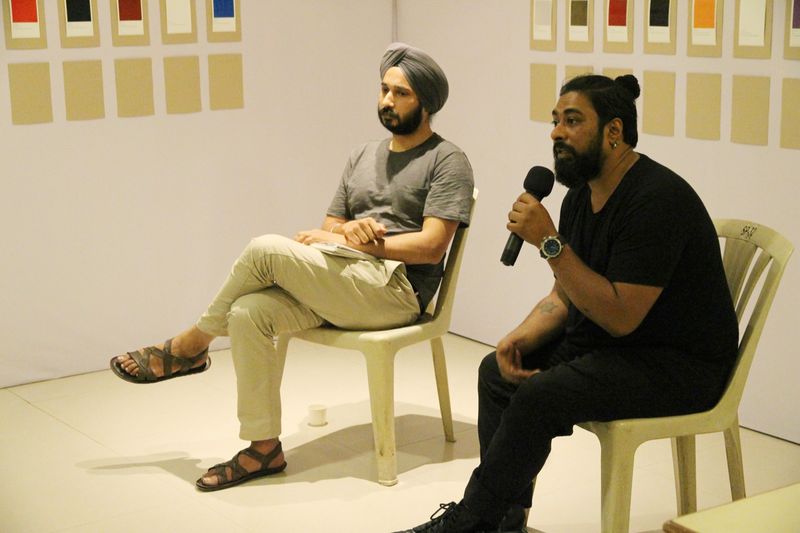
March 17, 2017 | 6:30 – 7:30 pm
Following a spoken word performance by Ramneek Singh, a conversation between Artist Ali Akbar Mehta and Ramneek Singh looks at ‘Colour and Violence’ through the lens of poetry and the spoken word, attempting to bridge the often unverbalised but deeply personal and unique emotional responses.
Manifestation of Violence
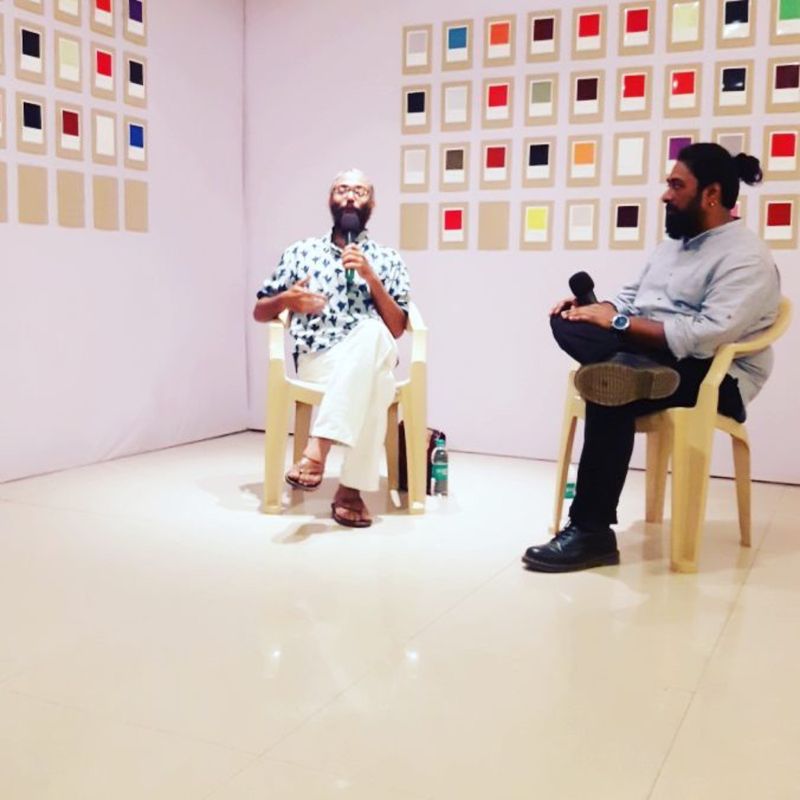

March 18, 2017 | 6:30 to 8:00 pm
Ali Akbar Mehta and Simpreet Singh discuss how the project is addressing the notion of freely given information, conditional agreements and consent – to corporations and governments, as opposed to an artist project. Simpreet Singh brings his knowledge and experience of having worked with the 'Right to Information Act; (RTI) to similarly pursue and make visible those truths that are important to us.
Big Data Ethics

March 19, 2017 | 6:30 to 8:00 pm
Ali Akbar Mehta in conversation with Sameer Pitalwala discuss how most data-mining exercises and empirical scientific surveys require a culled group in order to eradicate diversity, a standardisation of the test group to remove ‘noise’. Instead, a project such as ‘256 Million Colours of Violence’ is a celebration of that noise which represents the diversity of Human experience and collective memetic history. It is also part of an ongoing discourse to reduce effects of stereo-typification through personal scrutiny of the word and meanings of ‘Violence’ by asking how is the narrative experience of colour embodied, embedded and extended in the contexts of these meanings.
Urgency of Asking Questions
in conversation with Kevin Lobo, Piramal Museum, Mumbai
Ali Akbar Mehta talks to Kevin Lobo about his project ‘256 Million Colours of Violence’ and the urgency of asking questions. They discuss tools of inquiry used and attempt to dissect the various narratives presented through the survey. Inquiries into colour, violence and their perceptions can lead to multiple directions – the conversation looks at how the narrative experience of colour may be embodied, embedded and extended in the contexts of these meanings.
The conversation was conducted in Piramal Museum of Art, as part of Limitations of Liability, an eight day program between March 17 to 28, 2017, structured around ‘256 Million Colours of Violence’ – an interactive survey-based-research project, asking people ‘What according to you, is the Colour of Violence?’.
The project began in 2016, and now includes more than 200 entries of people from all walks of life. 256 Million Colours of Violence is available to the public for free. The exposition of survey results were installed along with a participation booth at The Mumbai Assembly and Harkat studios inviting everyone to participate in the ongoing survey.
Limitations of Liability was held across three venues:
The Mumbai Assembly (Bandra), The Piramal Art Foundation (Lower Parel) Harkat Studios (Versova)
You can know more about the survey and participate at www.256milioncoloursofviolence.com
Limitations of Liability, Harkat Studios
Exhibition and Film Screenings
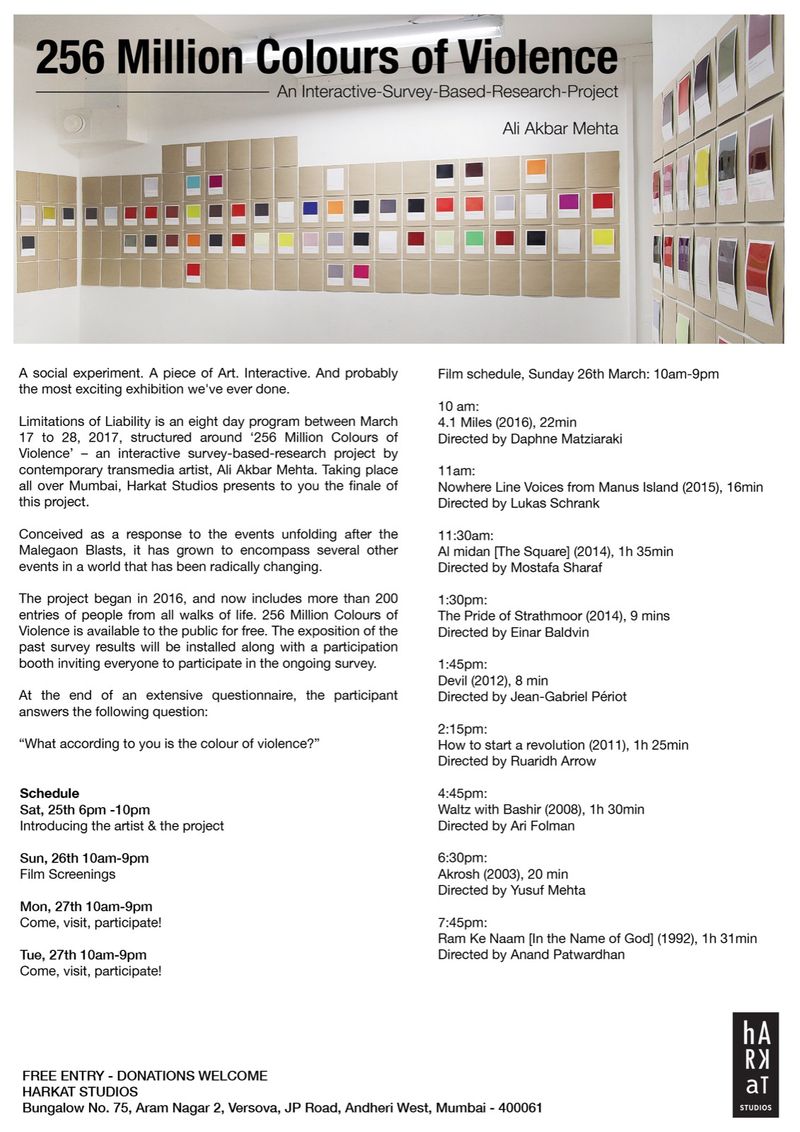
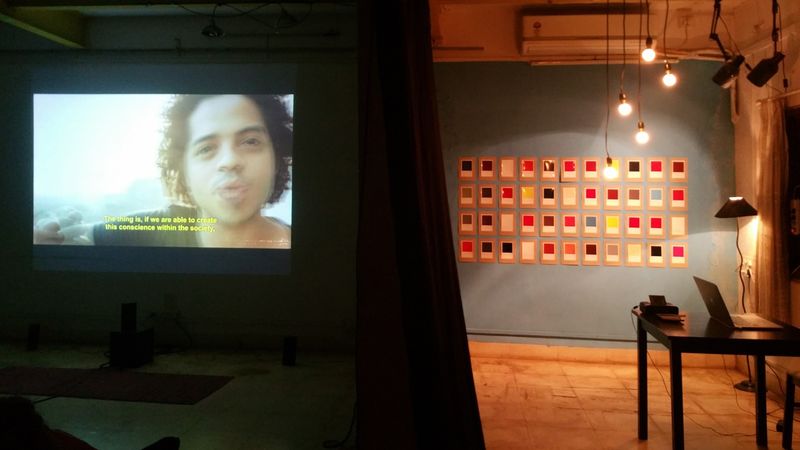


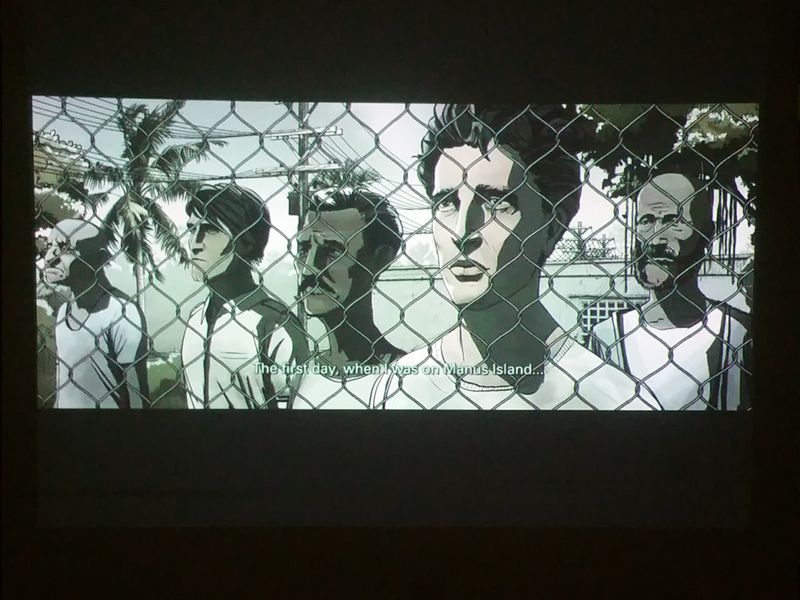


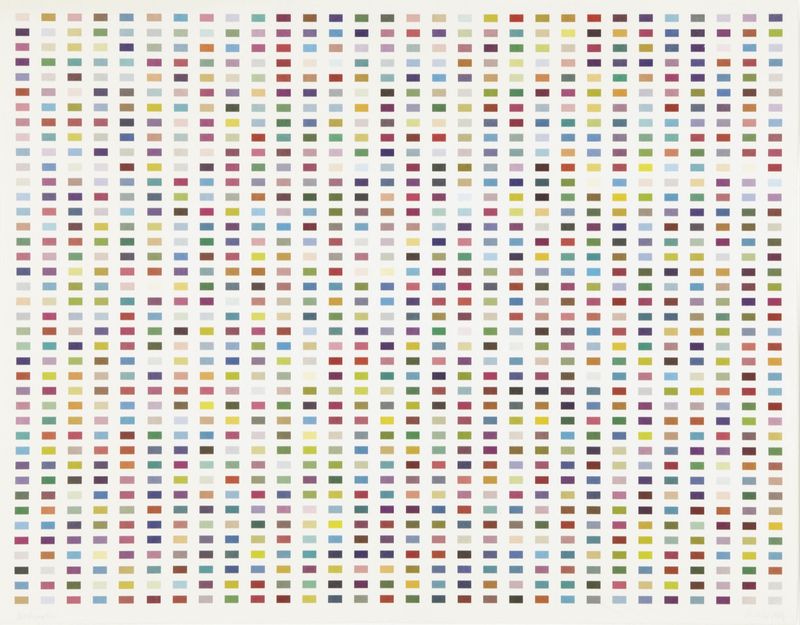
256 Million Colours of Violence, Exhibition
Third Space, Helsinki
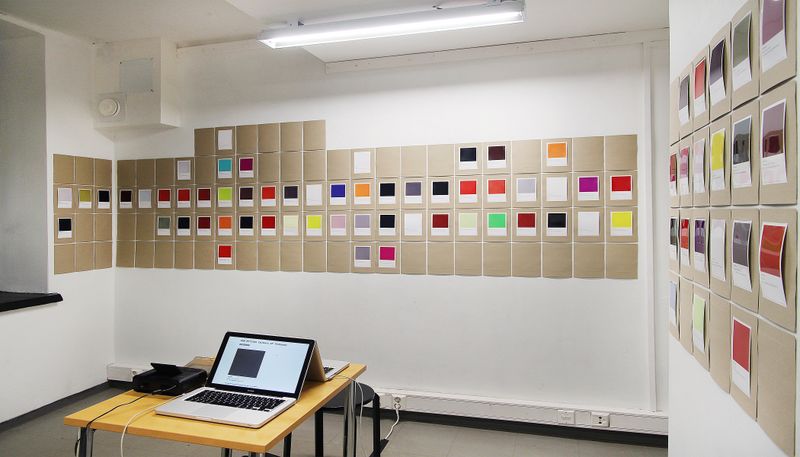
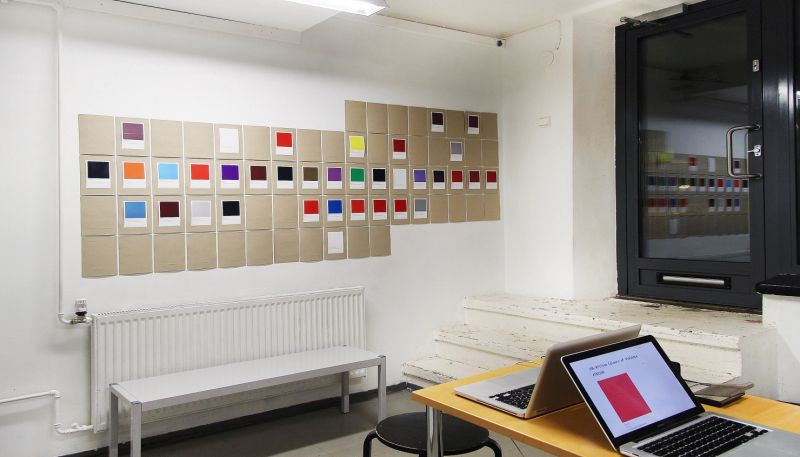

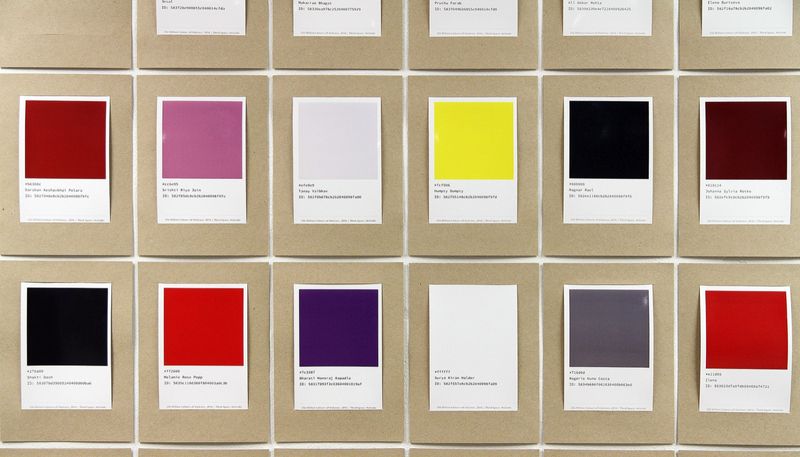
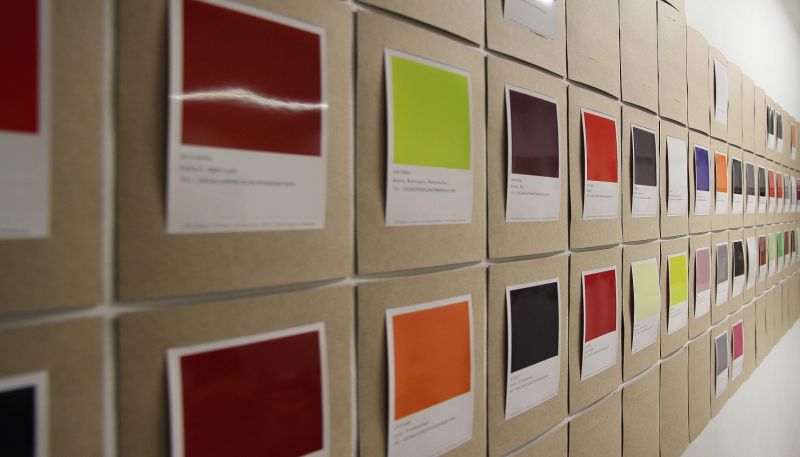
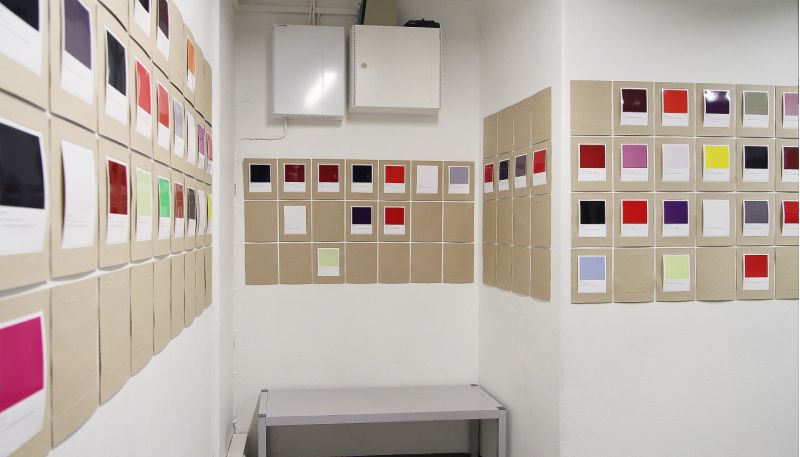
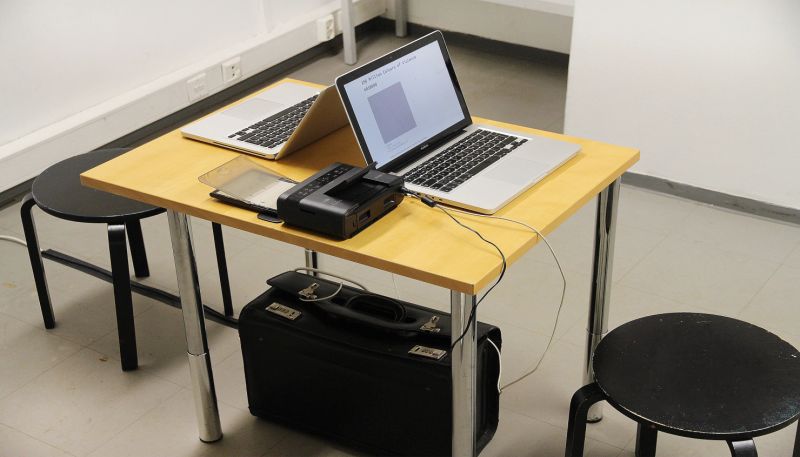
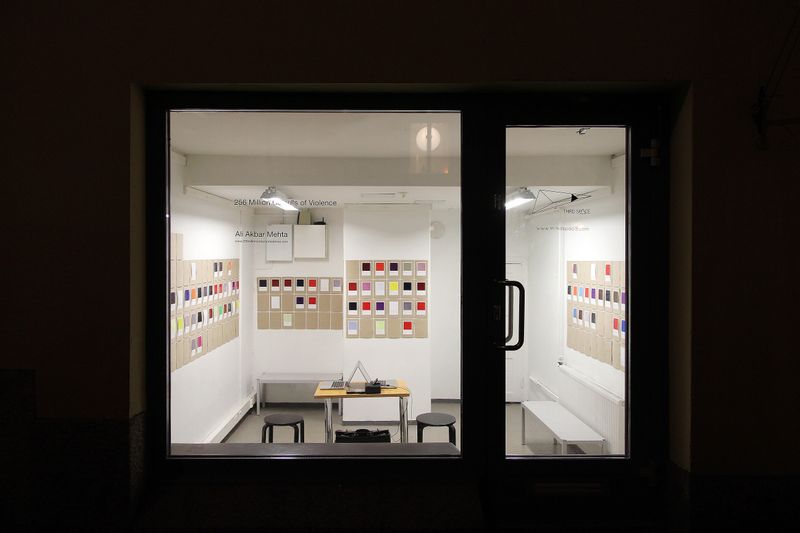
The first iteration of 256 Million Colours of Violence is exhibited in Third Space, Helsinki, 2016. Through this exhibition, a first public encounter with this format of online survey takes place.
Not your Regular Archive
Sakal Times, 2018
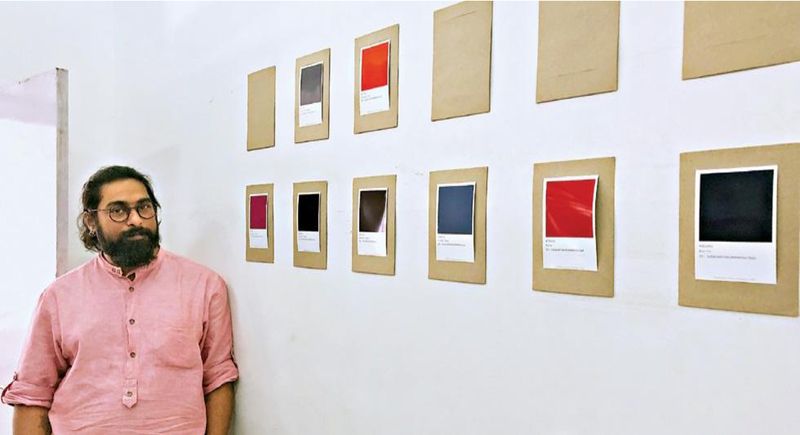
Read here
Does violence have a colour?
Mid-day, 2017
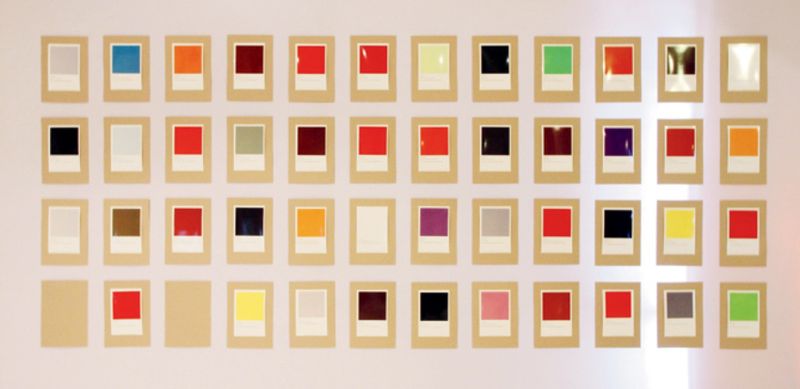
Read here
Shades of Violence
Hindustan Times, 2017

What is the colour of violence?
Hindustan Times, 2017
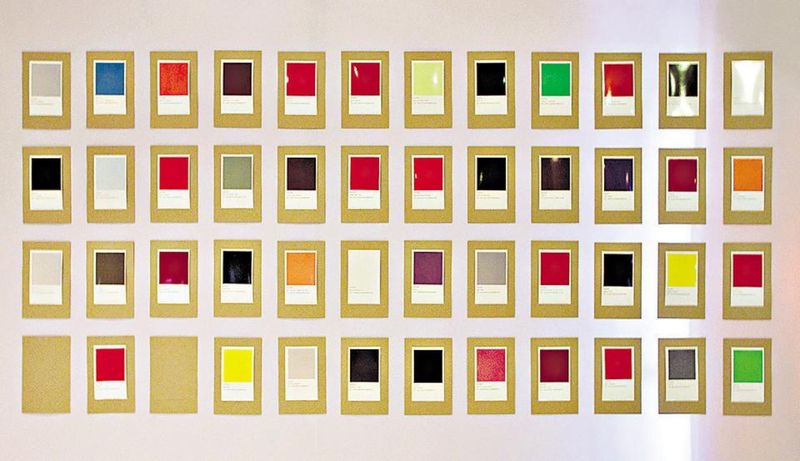
Read here
In Conversation with Ali Akbar Mehta
Interview by Arlene Tucker, Pixelache Festival 2019: Breaking the Fifth Wall
In April 2019, I was interviewed by Arlene Tucker, Pixelache member, towards my participation in Pixelache Festival 2019: Breaking the Fifth Wall

Read the complete interview here.
Pixelache Helsinki is a transdisciplinary platform for emerging art, design, research and activism. It is an association of artists, cultural producers, thinkers and activists involved in the creation of cutting-edge cultural activities.
About 256 Million Colours of Violence
Artist Statement by Ali Akbar Mehta for website ver.1
256 Million Colours of Violence is a survey based interactive archival research project that asks the participants to choose a colour that to them represents violence.
The project started as a response to the specific events unfolding after the Malegaon Blasts [1] (2006, India). Now, a decade after the event, this response has grown to encompass several other events in a world that is radically changing.
An inquiry into colour can lead to multiple directions. Colour is troubled light – a violently oscillating frequency entering our optical system that is translated by the visual cortex of our brain. When Newton split light into the visible colour spectrum it was science.Colours have become symbolic of emotions and thoughts, taking on animate qualities and connotations that surpass their scientific properties. Colour is a central feature of social life yet its value in sociological theory is ambiguous. Colour in its perception is familiar and intuitive and subjective in its meaning where we seldom understand it beyond the parameters of our own consentual social reality.
The relationship between colour and perception is fundamental, and this project is an attempt to dismantle our selves through our understanding of colour. Perception is informed by Context. The human eye is capable of distinguishing millions of colours, but total objective colour acuity is a skill more rarified than perfect pitch (the ability to identify a single musical note without accompaniment). Most of us need context in order to make accurate colour recognition but when coupled with the proper context, we notice very subtle differences in hue, lightness, and intensity.
Colour and its perception are an unstable and contestable phenomenon shaped by personal memory and social and material factors. Similarly, Violence and its perception are an unstable and contestable phenomenon shaped by social and material factors. When colour is coupled with a subject as topical as violence, we probably have a deeply personal and unique emotional response to it. Most of us, having a sufficiently distinct understanding of things could probably assign a colour value in terms of a quick interface of the emotional quotient associated with it. This often cannot be verbalised but may be linked to a sensory memory or association – this kind of attribution is done not as an intuitive understanding but rather as a Pavlovian learning [2] or an acquired understanding. Despite having no inherited political value, colour can be made political through a sequence of contextual references. Colour can become a complex dataset presenting a person’s nuanced understanding of the world. The format of the survey is intended to gather this understanding.
Most Data mining exercises and empirical scientific surveys require a culled group in order to eradicate diversity, a standardisation of the test group to remove ‘noise’. ‘256 Million Colours of Violence’ is a celebration of that noise which represents the diversity of Human experience and collective memetic history. It is also part of an ongoing discourse to reduce effects of stereo-typification through personal scrutiny of the word and meanings of ‘Violence’ by asking how is the narrative experience of colour embodied, embedded and extended in the contexts of these meanings.
The aim of the Project is also to make the participant aware, or conscious of his/her decision regarding their choice by embedding it within series of contexts. Choice here is an active participation as well as a subliminal interfacing of several seemingly disconnected values.
Political parties and media are comfortable with the political position of attributing ‘no colour’ on religious, community or ideology based acts of violence so as to avoid issues of colour associations and its apparent, actual or perceived impacts on society. The inherent logic of the project takes their view and reverses it by stating that “Violence has a colour – it is a value of an acquired understanding unique to each individual.” The project is an artist experiment based on no previous survey or standardisation. The choice of the participants are purely their own, which is to say formed by unique combination of various elements such as parenting, religion, gender, social circles, peer group and education to name a few.
The project is addressing the notion of freely given information, conditional agreements and consent – to corporations and governments, as opposed to an artist project; that an artist may be require to profile its participants in itself seems like a joke. The survey hints at issues pertaining to equality of gender, skin colour, race and ethnicity; questions privilege, social class and problems of minimum income as well as confronts through inquiry the political-religious-socio-economic quadrangle as a constant existence in our lives today. It also acts as an introductory archive of several streams of information, and as such occupies a paradoxical position making the viewer/participant both the giver and receiver of information, if they so wish.
To this end, the viewer/participant is confronted with a question:
What according to you is a colour of violence?
If I ask you this question, chances are that you already have a colour in mind. It’s probably a very strong colour, resonating with intensity of how important this question may be to you. You probably have a specific colour in mind, you just need to pinpoint it specifically to lock it down – to triangulate its position on the map of the colour chart, as it were.
This might be easy to do in a palette of 8, or 16, or even 64 shades. As a choice, it may even fit into a colour that may be generic template for the question – but what happens if you are confronted with a digital palette of 256 million colours? [3] Is your particular tint/shade/hue the exact same tint/shade/hue as the one you had in your mind – is your black / saffron / green / white / red the same as another’s?
______
[1] The Indian Connection – The Malegaon Bomb Blasts, 2006 and ‘Saffron Terror’:
Saffron terror is a neologism used to describe acts of violence motivated by Hindu nationalism. The acts are allegedly perpetrated by members, or alleged members of Hindu nationalist Rashtriya Swayamsevak Sangh (RSS) and Abhinav Bharat. However, in some cases the motivation for the acts has not been clearly determined, and in others it has been determined to be unrelated to Hindu nationalism. The term comes from the symbolic use made of the saffron color by the Hindu nationalist organisations.
The first known use of the term ‘Saffron Terror’ is from a 2002 article in Frontline. However it was in the aftermath of the 29 September 2008 bomb blast in the predominantly Muslim town of Malegaon in Maharashtra that it came to be used widely. In late 2008, Indian police arrested members of a Hindu terrorist cell allegedly involved in Malegaon blast. The blame for several of these attacks had been placed on radical Islamist groups.
Former Home Minister of India P. Chidambaram urged Indians to beware of “Saffron terror” in August 2010 at a meeting of state police chiefs in New Delhi.
Since that remark was made, a Hindu Swami in the Patan district has filed a defamation lawsuit against Chidambaram, saying that the saffron color is symbol of Hindu religion and that saints across the country wear attire of the same color. The Swami also said that saffron was a symbol of peace, sacrifice and God, and that Chidambaram has hurt the sentiments of Hindus by linking the symbol with terrorism. On 6 September 2010, a Gujarat court ordered a probe into the use of the term by Chidambaram. Chidambaram was also criticised by members of his own party (the Indian National Congress) for the use of the term.
“Saffron or bhagwa or kesariya (Hindi equivalents of saffron) is not the issue here. The issue is terrorism. Terrorism does not have any colour other than black,” said Janardan Dwivedi, Congress general secretary and head of the party’s media department.
Making plain the party’s disapproval of Chidambaram’s controversial formulation, Dwivedi said terrorism could not be associated with any color, “be it saffron, green, white or red”. He further said, “Terrorism is terrorism and should be opposed in whatever form it comes.” Significantly, he also stressed that “saffron colour has been part of our ancient tradition and is associated with our freedom struggle”.
Home minister P Chidambaram did not exactly use the phrase ‘saffron terrorism’ but made it clear it was not his patent and in the past UPA and Congress leaders have found it quite expedient to refer to ‘saffronisation of education’ to target the previous NDA government.
While vowing that he would follow the ‘party line’ as supreme, the minister said there were right-wing extremist groups and the message that they could be capable of violence should not be lost in phrases. He said, “Perhaps the use of that phrase has brought home the message. So, the purpose, in a way, has been served.”
[2] A method to cause a reflex response or behaviour by training with repetitive action. The Russian physiologist Ivan Petrovich Pavlov conditioned dogs to respond in what proved to be a predictable manner.
[3] Photoshop has a digital palette of 256 Million Colours.
Grant Report
for 256 Million Colours of Violence, Aalto University Grant
- Project Title: 256 Million Colours of Violence
- Grant recipient: Ali Akbar Mehta
- Date of grant receipt: 29.09.2017
Requiring grant funding of €2500 for content development and upgrading the website of this project. A grant of amount €1000 was released.
The following were directives of the application for the Aalto Arts Grant:
- The ‘back-end development’ and ‘front-end design’ of the website will be done with the help of an advanced programmer and UX designer.
- to include this new ‘research data’, creating a data platform of alternate and in-depth education across over 1700 subjects.
- The upgraded website will be published online on November 25, 2017.
- Until then the website continues to be available in its current form for participation in the project.
As per these directives, the grant amount of € 1000/- has been treated as initial funding to resume ‘back-end development’ and ‘front-end design’ of the website.
Work done:
A new User Interface (UI) has been designed replacing the current linear system with an easier navigation:
Front-end Design:
- only a single question will appear at a time.
- all answer choices will be displayed as easy to navigate boards, rather than as a linear list. This is done for a cleaner and more intuitive control. All boards are displayed simultaneously to facilitate an easier process of selection.
- ‘hovering over’ each option displays an interactive textbox with a detailed explanation. The explanations constitute ‘research data’ forming a secondary archive.
- A ‘progress bar’ indicates the current stage of the participant, and how many questions remain.
- Questions have been grouped and clubbed into specific clusters. Completing each cluster allows the participant to save progress, and return to it later.
- A new animated logo has been added to the home page.
- A new Colour Gallery is incorporated into the website Home page, where the order changes based on selected parameters from the questionnaire. Each colour links to a summary of individual participant’s answers.
Back-end Development:
- A new configuration of administrator control is added to facilitate incorporation of ‘research data’ into the interface of the website.
- A data analysis engine will be will be incorporated into the website to analyse the incoming data through active participation into the third stage of the project.
- In the current single page format of the survey, questions and their multiple choices are provided as a linear list, without detailed explanations making the website restrictive and difficult to navigate . It is not possible for any participant to know about each choice within each question thereby reducing the chances of informed decision. This redundancies affect the quality of the project.
- This upgrade is a major step towards the process of completing this complex survey-based research project. It also facilitates the creation of easier processes in communication and design, allowing for more people to interact with the project, and for us as artist and developers, to continue to push the boundaries with the possibilities of what this hybrid artwork can do.
Future Steps:
- Attending 1 month Artist Residency in Pune, India, titled ‘How to Participate in the Archive’, by TIFA Working Studios. During this residency I will complete the process of Archiving the ‘research data’ and incorporate it into the online project.
I would like to once again thank you for sharing the vision of the project and facilitating the means to make this work possible.